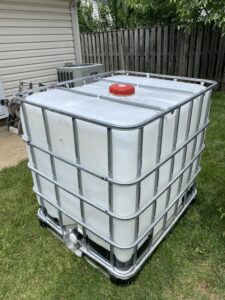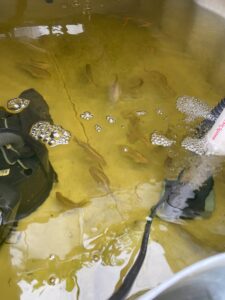
1. How to Get Started with an Aquaponics Tank: Sourcing and Setting Up
Building an aquaponics system doesn’t require a big investment or a lot of space. In fact, getting your tank is one of the most accessible parts of the setup process:
- Recycled or Repurposed Tanks: If you’re eco-conscious, consider finding a used aquarium or water tank from local buy/sell groups, farm auctions, or community recycling centers. Many people sell old tanks in good condition, and you’ll get extra points for keeping one more item out of the landfill.
- DIY Options: Many aquaponics fans have converted food-grade plastic barrels or tubs into efficient tanks. They’re budget-friendly, customizable, and come in a range of sizes. Just be sure the container is safe for fish and won’t leach harmful chemicals.
- Local Fish Stores and Specialty Suppliers: Aquaponics has become popular enough that many pet or farm supply stores now offer pre-designed aquaponics tanks, which can save you time and give you a professionally optimized setup.
Whether you choose to buy new, repurpose an old tank, or build your own, make sure to thoroughly clean and prep your tank to provide a healthy environment for both fish and plants. A stable, well-maintained tank is essential to keep your aquaponics system running smoothly and sustainably.

2. Types of Fish for Aquaponics: Finding the Right Fit for Your Home System
When it comes to home aquaponics, choosing the right fish can make all the difference. Your tank’s fish are more than just companions; they’re the engine of the entire system, producing nutrient-rich waste that feeds your plants. Some of the best options include:
- Tilapia: This hardy, adaptable fish is perfect for beginners. Tilapia thrive in warmer water, are easy to breed, and quickly produce nutrients for plants.
- Goldfish: These resilient little swimmers are a low-maintenance choice for smaller tanks. They handle temperature fluctuations well and are known to tolerate diverse water conditions.
- Koi: For those with larger tanks, koi can bring a touch of beauty and functionality. They’re robust and can provide more nutrients due to their size and waste production.
- Catfish: These bottom-feeders are great for larger setups, as they’re highly efficient waste producers. They’re ideal for year-round systems if you’re in a temperate climate.
When selecting fish, remember that each species has specific needs for water temperature, pH levels, and tank size. As long as you keep these conditions stable, your fish will reward you with a constant supply of nutrient-rich water, the lifeblood of your aquaponics ecosystem.

3. Plants That Thrive in Aquaponics: Harnessing Fish Nutrients for Optimal Growth
One of the beauties of aquaponics is its versatility in plant selection. Fish waste is nutrient-rich and ideal for growing many types of plants that can enhance your diet and even your home’s visual appeal. Here are a few all-stars for aquaponic systems:
- Leafy Greens: Lettuce, kale, and spinach are low-maintenance and thrive in fish nutrient water. They’re fast-growing and provide a steady supply of fresh greens for salads and cooking.
- Herbs: Basil, mint, parsley, and cilantro flourish in an aquaponics setup and can elevate your cooking with fresh, homegrown flavors.
- Tomatoes: If you’re looking to add some heft to your produce, tomatoes do well in larger systems with nutrient-rich water. They require a bit more care but reward you with abundant, juicy fruit.
- Peppers: Like tomatoes, peppers need a stable environment but can add both color and spice to your harvest. They’re ideal for warm-weather systems and thrive in the nutrient-rich water from fish waste.
When choosing plants, think about what you’ll use most in your kitchen and what fits your system’s size and fish load. Many of these plants grow well year-round, so you’ll enjoy fresh, sustainable produce regardless of the season!